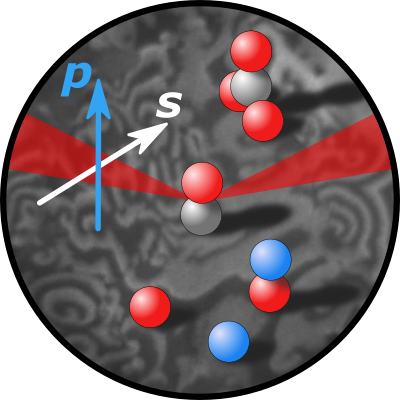Publications
2022

Tiyatha, Worapinit; Chukeaw, Thanaphat; Sringam, Sarannuch; Witoon, Thongthai; Chareonpanich, Metta; Rupprechter, Günther; Seubsai, Anusorn
Journal ArticleOpen AccessIn: Scientific Reports, vol. 12, pp. 2595, 2022.
Abstract | Links | BibTeX | Tags: P08, TACO-associated
@article{Tiyatha2022,
title = {Oxidative coupling of methane—comparisons of MnTiO_{3}–Na_{2}WO_{4} and MnO_{x}–TiO_{2}–Na_{2}WO_{4} catalysts on different silica supports},
author = {Worapinit Tiyatha and Thanaphat Chukeaw and Sarannuch Sringam and Thongthai Witoon and Metta Chareonpanich and Günther Rupprechter and Anusorn Seubsai},
url = {https://www.nature.com/articles/s41598-022-06598-6#citeas},
doi = {10.1038/s41598-022-06598-6},
year = {2022},
date = {2022-02-16},
urldate = {2022-02-16},
journal = {Scientific Reports},
volume = {12},
pages = {2595},
publisher = {Springer Science and Business Media LLC},
abstract = {The oxidative coupling of methane (OCM) converts CH_{4} to value-added chemicals (C_{2+}), such as olefins and paraffin. For a series of MnTiO_{3}-Na_{2}WO_{4} (MnTiO_{3}-NW) and MnO_{x}-TiO_{2}-Na_{2}WO_{4} (Mn-Ti-NW), the effect of loading of MnTiO_{3} or MnO_{x}-TiO_{2}, respectively, on two different supports (sol–gel SiO_{2} (SG) and commercial fumed SiO_{2} (CS)) was examined. The catalyst with the highest C_{2+} yield (21.6% with 60.8% C_{2}+ selectivity and 35.6% CH_{4} conversion) was 10 wt% MnTiO_{3}-NW/SG with an olefins/paraffin ratio of 2.2. The catalyst surfaces with low oxygen-binding energies were associated with high CH_{4} conversion. Stability tests conducted for over 24 h revealed that SG-supported catalysts were more durable than those on CS because the active phase (especially Na_{2}WO_{4}) was more stable in SG than in CS. With the use of SG, the activity of MnTiO_{3}-NW was not substantially different from that of Mn-Ti-NW, especially at high metal loading.},
keywords = {P08, TACO-associated},
pubstate = {published},
tppubtype = {article}
}
The oxidative coupling of methane (OCM) converts CH4 to value-added chemicals (C2+), such as olefins and paraffin. For a series of MnTiO3-Na2WO4 (MnTiO3-NW) and MnOx-TiO2-Na2WO4 (Mn-Ti-NW), the effect of loading of MnTiO3 or MnOx-TiO2, respectively, on two different supports (sol–gel SiO2 (SG) and commercial fumed SiO2 (CS)) was examined. The catalyst with the highest C2+ yield (21.6% with 60.8% C2+ selectivity and 35.6% CH4 conversion) was 10 wt% MnTiO3-NW/SG with an olefins/paraffin ratio of 2.2. The catalyst surfaces with low oxygen-binding energies were associated with high CH4 conversion. Stability tests conducted for over 24 h revealed that SG-supported catalysts were more durable than those on CS because the active phase (especially Na2WO4) was more stable in SG than in CS. With the use of SG, the activity of MnTiO3-NW was not substantially different from that of Mn-Ti-NW, especially at high metal loading.
2021

Zeininger, Johannes; Suchorski, Yuri; Raab, Maximilian; Buhr, Sebastian; Grönbeck, Henrik; Rupprechter, Günther
Single-Particle Catalysis: Revealing Intraparticle Pacemakers in Catalytic H2 Oxidation on Rh
Journal ArticleOpen AccessIn: ACS Catalysis, vol. 11, no. 15, pp. 10020–10027, 2021.
Abstract | Links | BibTeX | Tags: P08, TACO-associated
@article{Zeininger2021,
title = {Single-Particle Catalysis: Revealing Intraparticle Pacemakers in Catalytic H2 Oxidation on Rh},
author = {Johannes Zeininger and Yuri Suchorski and Maximilian Raab and Sebastian Buhr and Henrik Grönbeck and Günther Rupprechter},
doi = {10.1021/acscatal.1c02384},
year = {2021},
date = {2021-07-27},
urldate = {2021-07-27},
journal = {ACS Catalysis},
volume = {11},
number = {15},
pages = {10020--10027},
publisher = {American Chemical Society (ACS)},
abstract = {Self-sustained oscillations in H_{2} oxidation on a Rh nanotip mimicking a single catalytic nanoparticle were studied by in situ field emission microscopy (FEM). The observed spatio-temporal oscillations result from the coupling of subsurface oxide formation/depletion with reaction front propagation. An original sophisticated method for tracking kinetic transition points allowed the identification of local pacemakers, initiating kinetic transitions and the nucleation of reaction fronts, with much higher temporal resolution than conventional processing of FEM video files provides. The pacemakers turned out to be specific surface atomic configurations at the border between strongly corrugated Rh{973} regions and adjacent relatively flat terraces. These structural ensembles are crucial for reactivity: while the corrugated region allows sufficient oxygen incorporation under the Rh surface, the flat terrace provides sufficient hydrogen supply required for the kinetic transition, highlighting the importance of interfacet communication. The experimental observations are complemented by mean-field microkinetic modeling. The insights into the initiation and propagation of kinetic transitions on a single catalytic nanoparticle demonstrate how in situ monitoring of an ongoing reaction on individual nanofacets can single out active configurations, especially when combined with atomically resolving the nanoparticle surface by field ion microscopy (FIM).},
keywords = {P08, TACO-associated},
pubstate = {published},
tppubtype = {article}
}
Self-sustained oscillations in H2 oxidation on a Rh nanotip mimicking a single catalytic nanoparticle were studied by in situ field emission microscopy (FEM). The observed spatio-temporal oscillations result from the coupling of subsurface oxide formation/depletion with reaction front propagation. An original sophisticated method for tracking kinetic transition points allowed the identification of local pacemakers, initiating kinetic transitions and the nucleation of reaction fronts, with much higher temporal resolution than conventional processing of FEM video files provides. The pacemakers turned out to be specific surface atomic configurations at the border between strongly corrugated Rh{973} regions and adjacent relatively flat terraces. These structural ensembles are crucial for reactivity: while the corrugated region allows sufficient oxygen incorporation under the Rh surface, the flat terrace provides sufficient hydrogen supply required for the kinetic transition, highlighting the importance of interfacet communication. The experimental observations are complemented by mean-field microkinetic modeling. The insights into the initiation and propagation of kinetic transitions on a single catalytic nanoparticle demonstrate how in situ monitoring of an ongoing reaction on individual nanofacets can single out active configurations, especially when combined with atomically resolving the nanoparticle surface by field ion microscopy (FIM).
